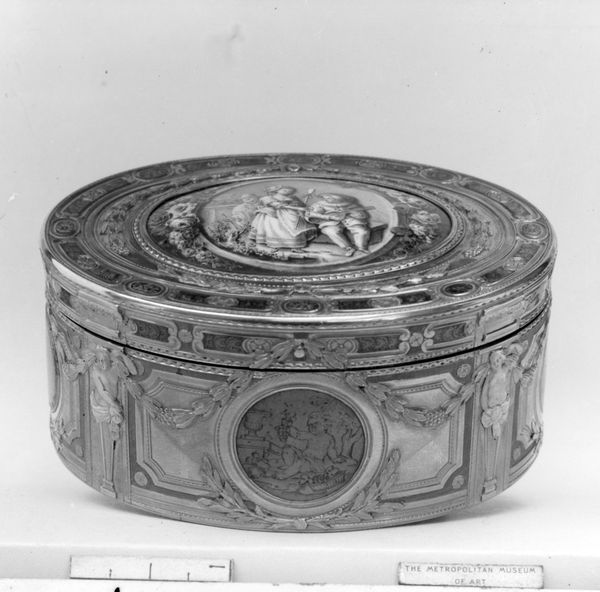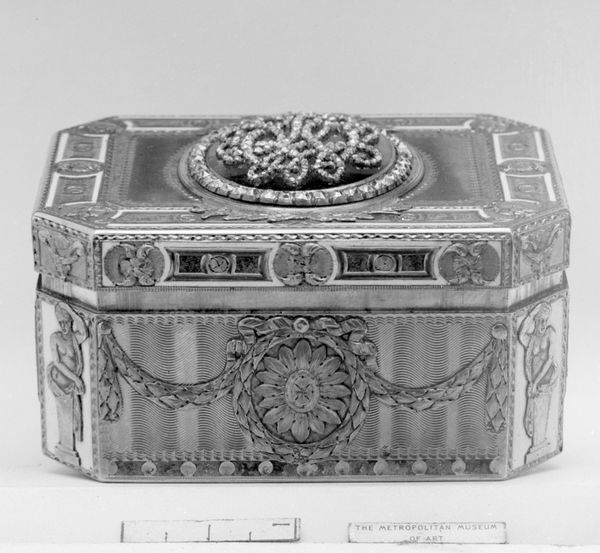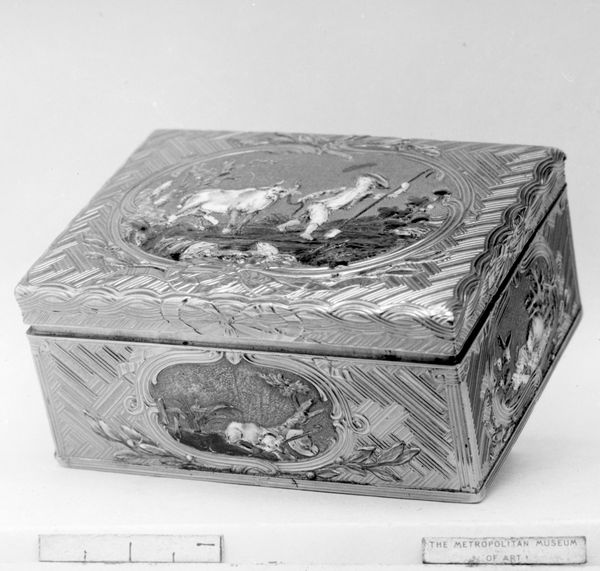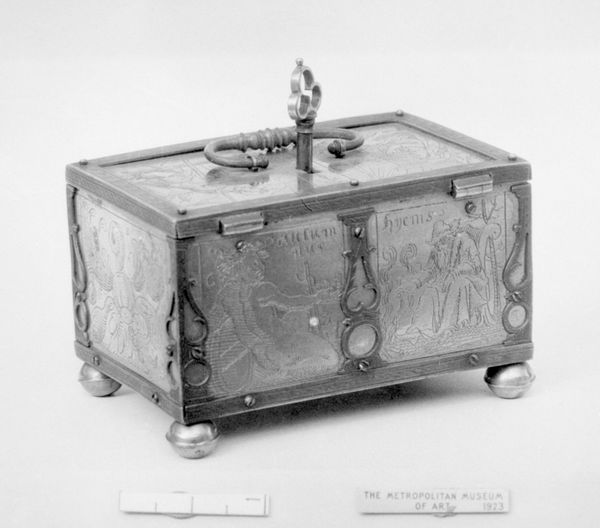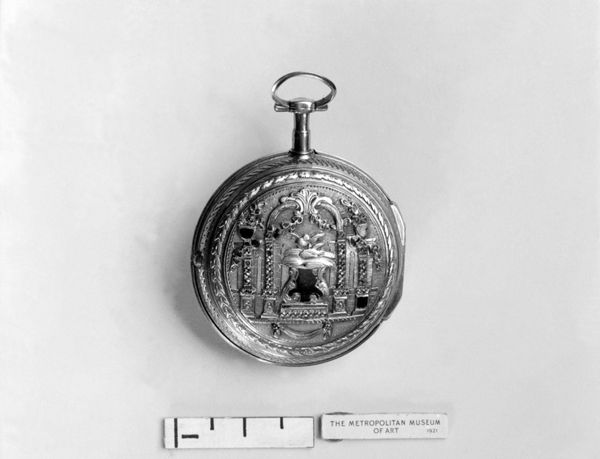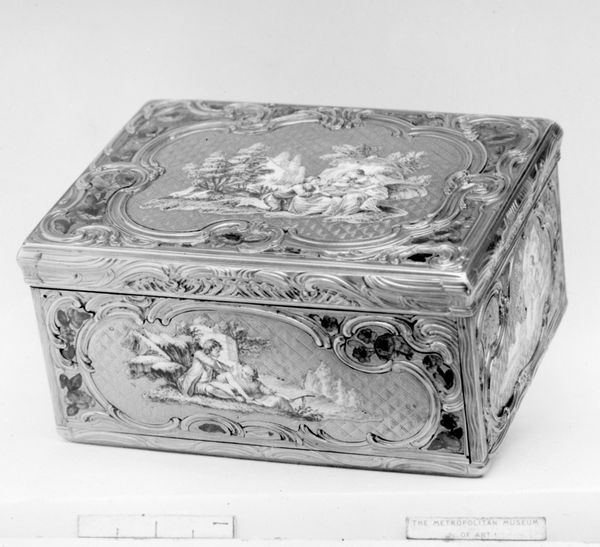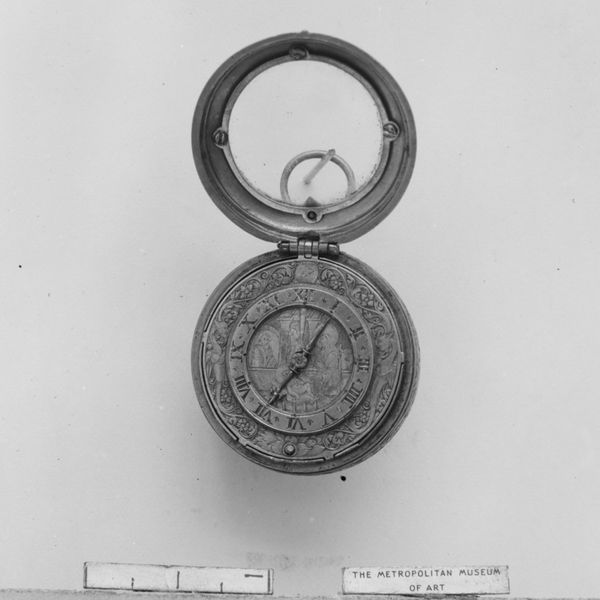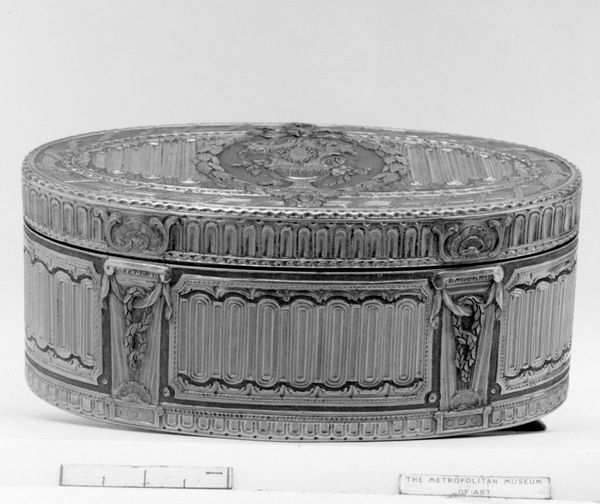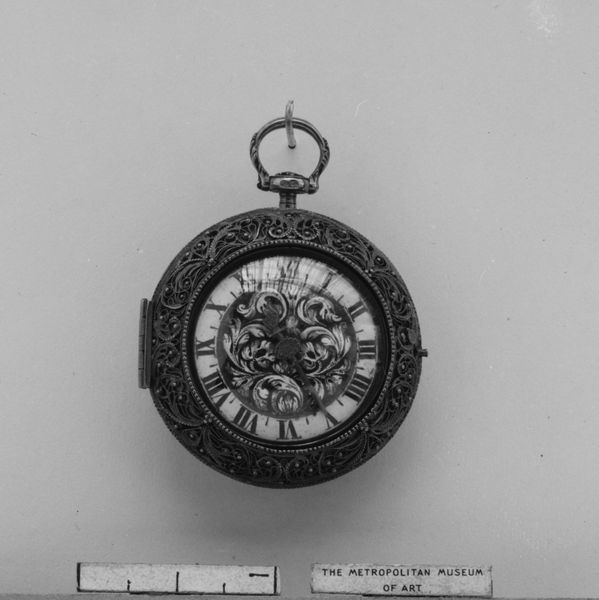
metal, sculpture
#
metal
#
sculpture
#
11_renaissance
#
sculpture
#
decorative-art
#
early-renaissance
Dimensions: Overall: 1 1/2 × 1 7/8 in. (3.8 × 4.8 cm)
Copyright: Public Domain
Editor: Right now, we’re looking at a Clock-watch, part of a set created between 1585 and 1599 by Charles Cabrier. It’s a beautiful metal sculpture currently housed at the Metropolitan Museum of Art. The engraving is incredibly detailed! What is your interpretation of it? Curator: I find this piece fascinating in the context of its time. Clocks, especially personal ones, weren't just about telling time; they were potent symbols of status and control during the Renaissance. The detailed engravings and portraiture raise questions. Who was this woman, and what did she represent? Consider, too, how these early timekeeping devices began to shape a culture of standardized work hours and labor discipline, and ultimately shifted our very understanding of time and our place within societal structures. Does the ornate nature contrast with the time standardization that came after this? Editor: That's an interesting perspective. I hadn’t considered the relationship between luxury objects and the societal impact of standardization. Does that mean access to time-keeping changed based on class, maybe along gender lines? Curator: Precisely. Think about who could afford such a luxury. Was this timepiece intended for a man, marking his power and influence, or was it a commissioned portrait of a noblewoman, intended to underscore her own claim to power, operating, perhaps, within the confines of prescribed social roles? Time becomes another layer within complex Renaissance power dynamics. Editor: I see it now. I appreciate the nuanced approach. This wasn't simply a pretty clock. Curator: It never is, is it? Approaching art in its proper historical, gendered, and sociopolitical settings can make you appreciate how far it goes to represent those intersectional themes that permeate our present.
Comments
No comments
Be the first to comment and join the conversation on the ultimate creative platform.
